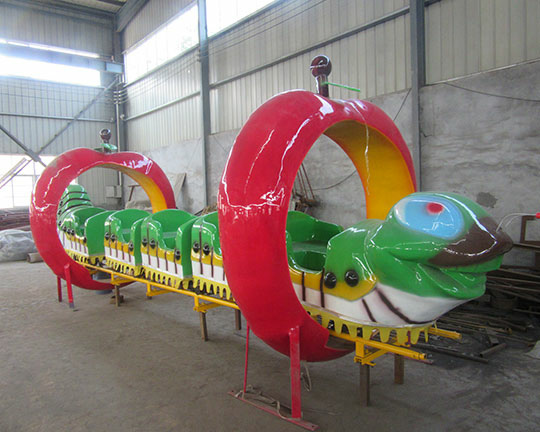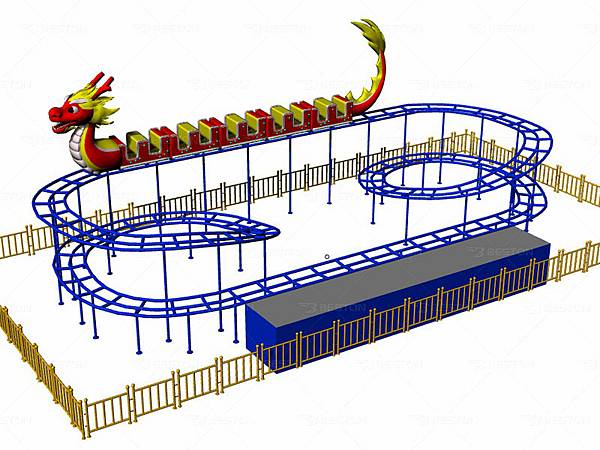Choosing a small roller coaster design can be an exciting yet challenging task. Whether you're planning for a theme park, a family entertainment center, or even a backyard coaster, several factors need careful consideration to ensure safety, excitement, and cost-effectiveness. Here's a guide to help you navigate through the process:

- Space and Site Requirements: Begin by assessing the available space for your roller coaster. Measure the dimensions carefully, considering both the footprint of the coaster itself and the required clearances for safety. Small roller coasters can vary widely in size, so knowing your space limitations will help narrow down your options.
- Target Audience: Understand the demographics and preferences of your target audience. Are you catering to families with young children, thrill-seekers, or a general audience? The coaster's design should align with the interests and comfort levels of your intended riders.
- Theme and Aesthetics: Determine if your roller coaster will fit into a themed environment or if it will stand alone. Themes can greatly enhance the overall experience and appeal of the ride. Consider whether you want a classic, nostalgic feel, a futuristic design, or something whimsical and playful.
- Type of Roller Coaster: Small roller coasters come in various types, each offering a unique experience. Options include:
- Steel Coasters: These are versatile, durable, and can accommodate various track layouts and ride elements.
- Wooden Coasters: Known for their traditional charm and nostalgic appeal, wooden coasters offer a different riding experience compared to steel coasters.
- Compact Coasters: Specifically designed for limited spaces, compact coasters often feature tight turns, steep drops, and thrilling elements packed into a small footprint.
- Family Coasters: These prioritize a smooth, gentle ride experience suitable for riders of all ages, making them ideal for family-oriented venues.
- Custom vs. Off-the-Shelf: Decide whether you want a custom-designed coaster tailored to your specific needs or if an off-the-shelf model would suffice. Custom designs offer flexibility but can be more costly, while off-the-shelf models provide a quicker and potentially more cost-effective solution. Learn about roller coaster price.
- Safety Standards and Regulations: Ensure that the roller coaster design complies with all relevant safety standards and regulations. Consult with engineers and regulatory authorities to guarantee that the ride meets all necessary requirements for structural integrity, rider safety, and operational procedures.
- Ride Elements: Consider the types of elements you want to incorporate into your roller coaster design. These may include drops, loops, helixes, corkscrews, banked turns, and inversions. Balance thrill with comfort, especially if your target audience includes children or families.
- Capacity and Throughput: Evaluate the anticipated ridership demand and choose a coaster design that can efficiently accommodate the expected capacity. Factors such as train configuration, loading and unloading procedures, and ride duration all impact throughput.
- Maintenance and Operating Costs: Factor in ongoing maintenance and operating costs when selecting a roller coaster design such as wacky worm roller coaster. Some designs may require more frequent inspections, replacement parts, or specialized maintenance procedures, which can affect long-term operating expenses.
- Manufacturer Reputation and Support: Research the reputation and track record of roller coaster manufacturers. Choose a manufacturer known for quality craftsmanship, reliability, and excellent customer support. A reputable manufacturer can provide valuable guidance throughout the design, construction, and maintenance phases.
- Budget Considerations: Finally, consider your budget constraints when selecting a roller coaster design. Balance the initial investment with long-term value, taking into account factors such as ride lifespan, maintenance costs, and revenue potential.

By carefully considering these factors, you can select a home roller coaster for sale design that not only fits within your space and budget constraints but also delivers an exciting and safe experience for riders of all ages. Whether it's a compact coaster for a backyard amusement park or a family-friendly attraction for a larger venue, the right design can enhance the overall appeal and success of your entertainment destination.






 留言列表
留言列表 amusementrides.id
amusementrides.id 


